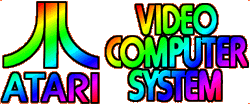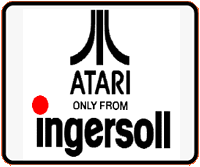|

In
Britain Ingersoll Electronics, a Heron corporation subsidiary,
imported and sold the VCS and games exclusively (my VCS power
supply bears the Ingersoll name not Atari's).
The
instruction manual even says "Atari, another good idea from Ingersoll"
like they had anything to do with it's design. Of course their
great idea was selling the VCS which then took off in a big way
and Atari decided to buy back the rights from them for $21million!
Ingersoll sold 11,000 units in August 1980 alone which was 300%
more than they had predicted at the start of the year.
When first launched in Britain in 1978/9 the VCS cost £169 with
carts at £15. The console was reduced to £99.95 in 1980 below
the psychological £100 barrier. They realised that greater profits
could be had by getting you to buy the hardware by offering it
fairly cheaply. Then selling the games software (which gave a
higher profit for its cost to make) that only Atari could supply.

By July 1981 Atari had produced 43 cartridges. Space Invaders,
Asteroids and Missile Command were the big three. Below them were
Breakout, Adventure, Circus Atari, Indy 500, Night Driver
and Video Pinball. Atari was responsible for $33 million
of the operating income of it's parent company Warner.
Home
games differed from coin-ops in that it was feasible to give the
player long games. The Adventure cartridge was the first of a
new style that came from experimentation.
You
had to find the enchanted chalice which had been stolen by an
evil magician. Although the graphics were very basic (for years
I thought Yorgle the fierce dragon was in fact a duck) you had
to explore a land of labyrinths, castles and dragons which presented
quite a challenge.
|

